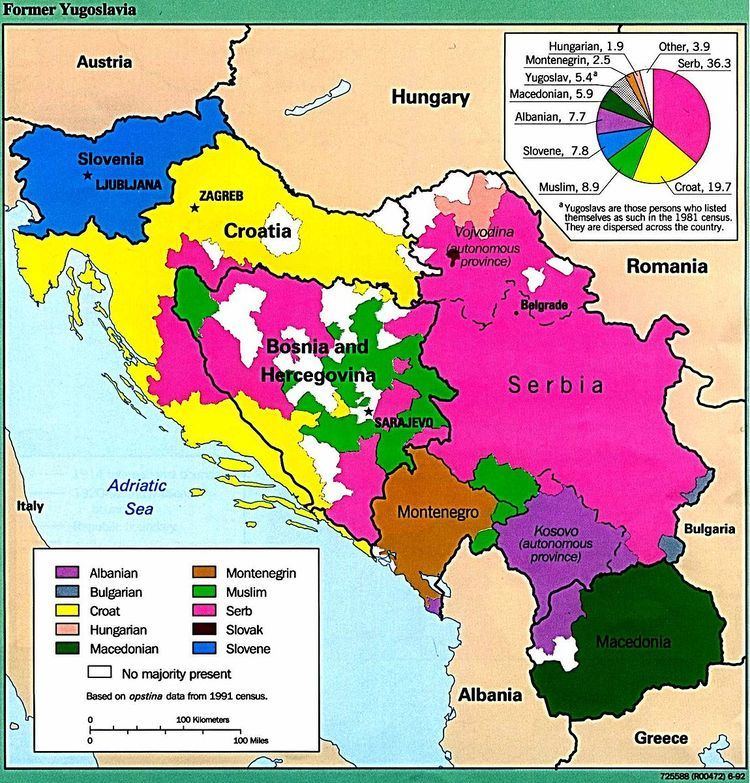 | ||
This article is about the demographics of the Socialist Federal Republic of Yugoslavia during its existence from 1945 until 1991. With the dissolution of the state, the following nations now have their own demographic studies:
Contents
For the demography of the former Kingdom of Yugoslavia (1918-1945), see Kingdom of Yugoslavia#Demographics.
Ethnic groups
This is data from two Yugoslav censuses (1971 and 1981). Ethnic groups that were considered to be constitutive (explicitly mentioned in the constitution, and not considered minority or immigrant) appear in bold text.
Republics by population
The population data is from the 1991 census.
1940s and 1950s
The SFRY recognised "nations" (narodi) and "nationalities" (narodnosti) separately; the former included the constituent Slavic peoples, while the latter included other Slavic and non-Slavic ethnic groups such as Bulgarians and Slovaks (Slavic); and Hungarians and Albanians (non-Slavic). About a total of 26 known ethnic groups were known to live in Yugoslavia, including non-European originated Romani people.
For the Slavic majority, four non-Slavic national minorities - Hungarians, Germans, Albanians and Italians - had proved troublesome already in the first Yugoslavia. Education in Hungarian was limited, a number of Hungarian and German cultural societies had been banned in the Kingdom of Yugoslavia until the late 1930s, when Yugoslavia drifted to pro-axis positions. Nonetheless, local Germans collaborated with the Nazi occupation forces during the World War II, and ethnic Hungarians generally welcomed the return of Backa to Hungary. The Yugoslav communist partisan movement was unpopular among those minorities, with the German Ernst Thälmann unit existing merely on paper and the Hungarian Petőfi unit numbering mere hundred men. After the occupation forces were pushed out of Yugoslavia, Germans, Hungarians and Italians were treated with severity by the victorious partisans.
The overwhelming majority of Germans were expelled or fled, fearing reprisals. Similarly, between 200,000 and 250,000 Italians were expelled or fled the newly annexed areas in Istria and Rijeka, as well as from Dalmatia. Hundreds (several thousands, according to some estimates) were summary killed in the process. To a much lesser extent, a similar fate was experienced by Hungarians, who fell victim to the ethnic repression in Vojvodina. However, after the war, free education in the native language of the minorities were guaranteed by the Communist constitution.
During the era of Tito-Stalin split, many Hungarians (who in 1953 made up around 25% of the population in Vojvodina) were sympathetic towards the Hungarian People's Republic, and the words of Radio Budapest spread among the villagers.
In 1950s, the Bulgarians were reported to be a poor and backward minority, in contrast, the Czechs and Slovaks were “industrious and valuable minorities” for Yugoslavia. Some of them also emigrated after the war, a number of them returning after communists seized power in Czechoslovakia in 1948.
